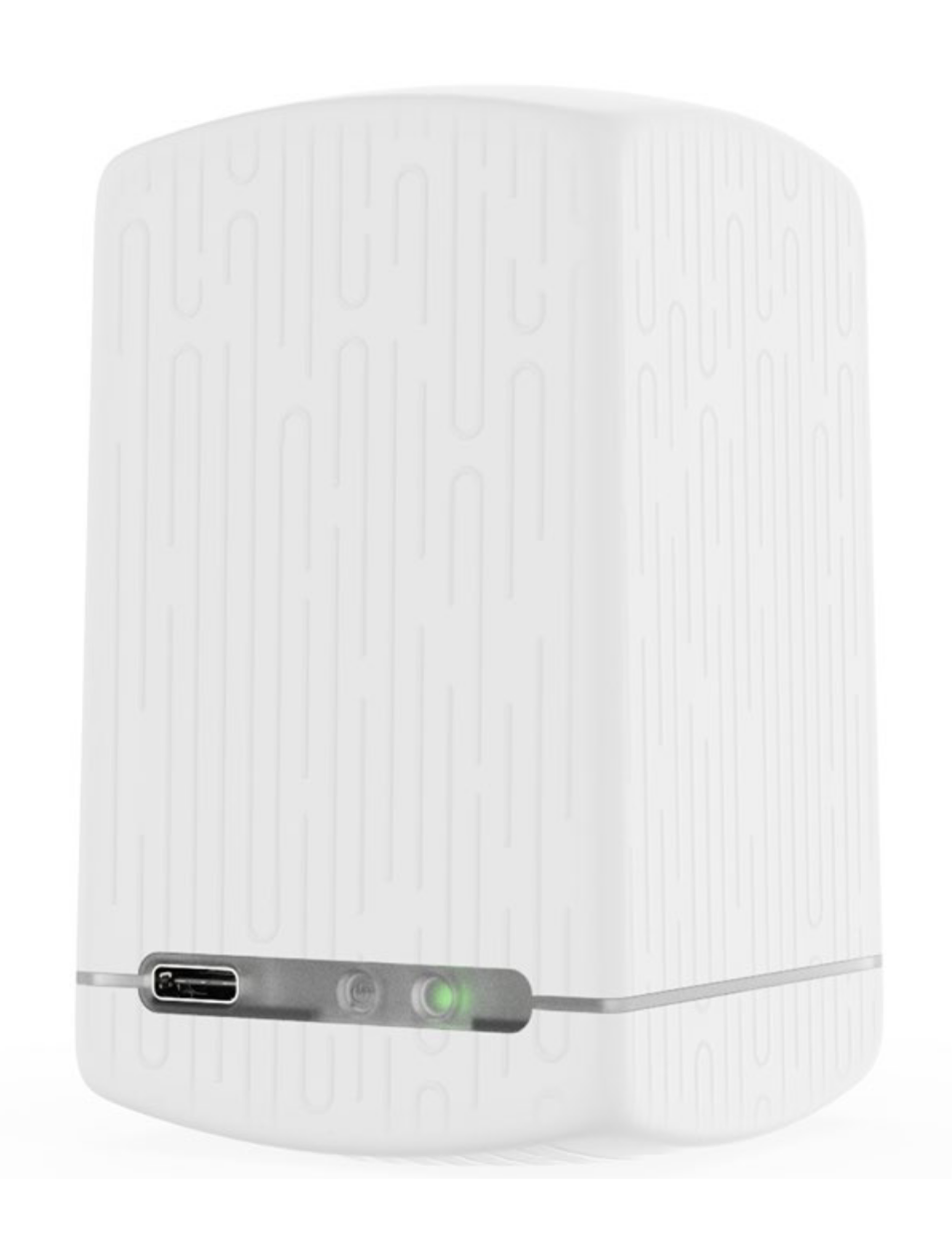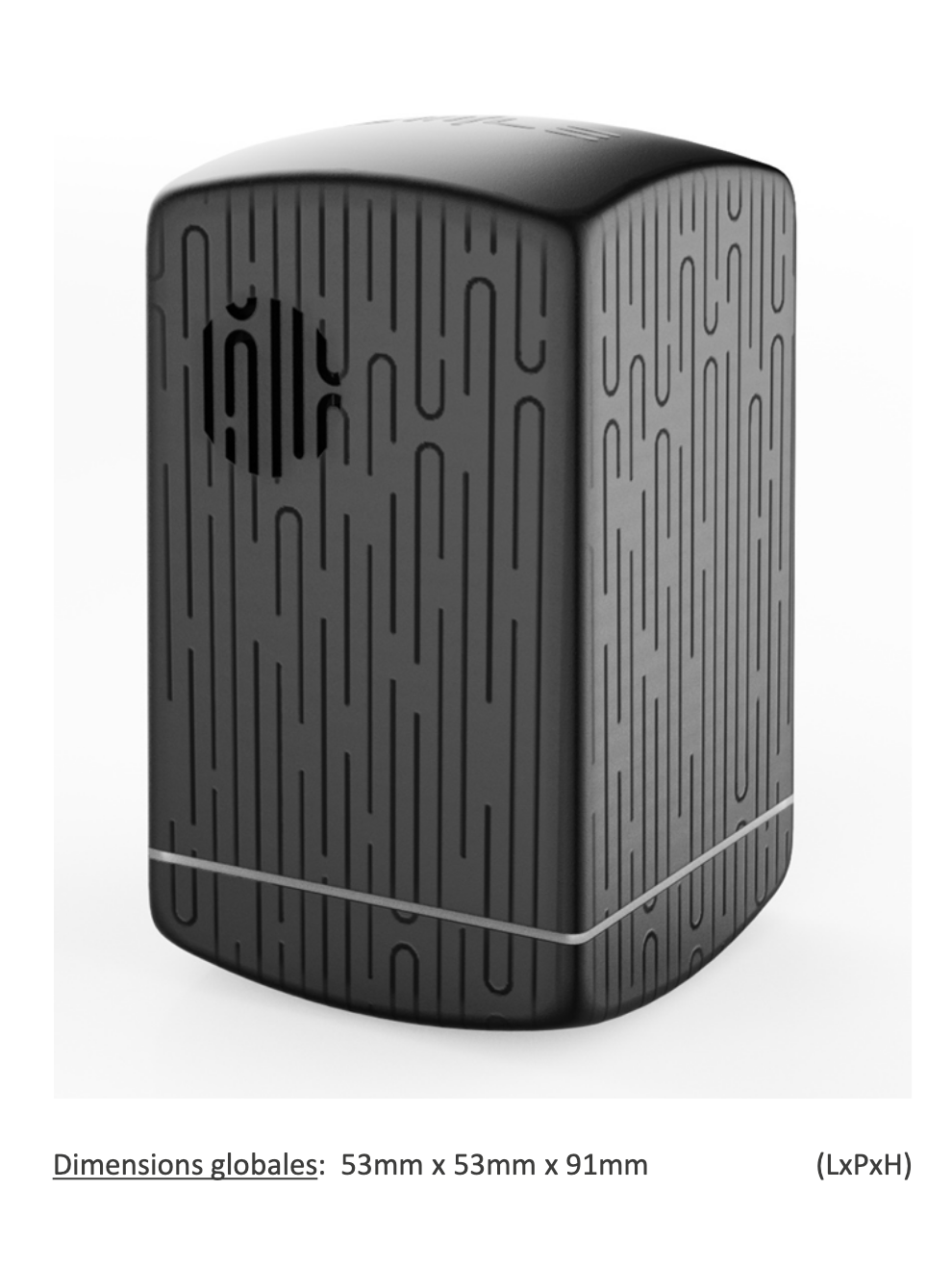SENSOR
Hardware
(IoT device)
There is no useful science without a robust technology to measure phenomena and produce data.
This project is motivated on the technological side by the fact that a significant part of commercial sensor technologies is sold without initial individual calibration to reduce cost. This part addresses one of the main shortcomings of "citizen" air quality measurement networks: the in-situ calibration of sensors. Indeed, precise measurements require the extraction of sensors from connected objects followed by recalibration in the laboratory, and this must be done on a regular basis, otherwise the device will be just a personal gadget drifting over time. However, this approach is prohibitive on the scale of a distributed sensor network whose low cost must ensure the widest possible diffusion in order to obtain this meshing effect. The SMILE project proposes a dynamic calibration of sensors deployed in the field to make these sensors more accurate. The calibration process will leverage on government or municipalities’ reference equipment. Thus, for the “connected object” (multi-sensor low-cost low-consumption self-calibrated device) which is the first condition of the SMILE solution, the breakthrough consists of the capacity of the connected object to integrate techniques (both software and hardware) for calibrating sensors dynamically to compensate their drift over time (cf. fig 1 below). These self-calibration techniques, which have been the subject of a patent application, are based on an “on-the-fly” calibration that enables low-cost sensors to turn accurate and moreover to expand the capacity of measure of reference sensors into the urban territory they are spread over. No solution like this exists today, like the state-of-the-art reviewing articles and Innovation Challenges demonstrates; see the conclusions of the last AIRLAB Challenge concerning the accuracy of air quality sensors.
Self-calibration operation
When a low-cost mobile sensor is co-located with reference instruments or government stations, a drift compensation is operated as presented in Figures (A) and (B). The drift compensation is achieved by recovering calibration parameters from reference instruments / stations (a and b values for linear characteristics) and superimposing reference and sensor characteristics to alleviate the Error. The calibration operation is managed by an embedded software at the low-cost mobile sensor level. Note that parameters a and b are function of environmental conditions such as Temperature and Humidity. Thus, each set of parameters will be saved in an embedded memory associated with the low-cost sensor device.
Software
(Mobile app)
An environmental sensor network is a set of measuring systems spatially deployed in order to periodically measure one or more quantities in an environment. Measuring systems can be static or mobile.
Mobile measuring systems are usually made of an integrated system that comprises one or more sensor sub-components and other supporting components needed to create a fully functional, autonomous and connected measurement device. Static measuring systems are usually based on reference instruments which are very often larger, and more energy-consuming compared to mobile measuring systems. In an air pollution context, a reference instrument is most commonly understood to be one with a certification that comes from an official regulating body and can be associated with a reference method notified in legal drivers. For example, instruments to measure air pollutants for regulatory compliance purposes must be approved by the Environmental Protection Agency (EPA) for use in the USA or nominated for type testing according to European Committee for Standardization (CEN) for use in the European Union. Reference instruments measure specific air pollutants to predefined criteria, such as precision, accuracy, drift over time and so on, to provide data that meets regulatory requirements. In extremis reference data on air quality can have validity in courts of law.
Traditionally, air quality monitoring relies on static measurement units made of expensive and complex reference instruments. However, the recent developments in both nanotechnologies and wireless technologies has enabled the rise of small, “low cost” and energy efficient environmental sensing devices arranged as a network. In the scope of SMILE project, “low-cost” mobile sensor refers to the initial purchase cost of a single functional sensor system when compared against the purchase cost of a single reference instrument measuring the same or similar atmospheric parameter(s). We consider a single sensor system as “low-cost” if the price of such a system is 100X orders of magnitude lower than a comparable reference instrument.
Based on this new generation of sensors, air quality monitoring can now be achieved using readily deployable low-cost devices, revolutionizing approaches to the study of environmental pollution. In the last few years, many projects involving dense low-cost sensor networks deployed in the field have emerged in order to better understand the spatial variability of air pollution, in particular within the Smart City trend.
Although deployments of a fleet of mobile sensors is now within economical and technical reach, their maintenance and reliability remain however a challenge. In particular, monitoring the quality of measurement throughout deployment duration is an important issue. Recent scientific literature shows that there are some trade-offs that arise when a low-cost sensor device is used rather than a reference equipment. Smaller and cheaper devices tend to be less sensitive, less precise and less chemically specific to the compound or variable of interest. This may be because they use different measurement principles to reference methods, or they are fundamentally limited, for example through shorter optical path lengths for absorption (a common reference measurement technique for certain compounds). Low-cost sensors may also report measurement values differently (for example in different units, e.g., voltage, particle number) than reference approaches and conversion to more meaningful or prescribed units (e.g., ppb, mass per volume) may not be straightforward. Moreover, factory calibration is too expensive for systematic application to low-cost sensors which are usually prone to drifting because of premature aging. These challenges have encouraged much research on in situ calibration.
Regarding the targeted pollutants, SMILE project considers the following constituents:
(i) Reactive gases including NO, NO2, O3 and CO2 (along with direct AQI access)
(ii) Particulate matter (PM) in three size classes (e.g., PM1, PM2.5 and PM10)
The list of these pollutants can be extended to address other constituents such as CO2 and CH4 related to greenhouse gases for instance. To this aim, the mobile sensor system developed within SMILE project will provide the ability to integrate new sensors on the fly.
In this context, and from the mobile sensor system technical point of view, the objectives of SMILE project are the following:
- Develop a low cost connected sensing device for air quality monitoring.
- Develop a breakthrough gas sensor calibration technique to turn the mobile sensor reliable.
This last point is motivated by the fact that a significant part of commercial sensor technologies is sold without initial individual calibration to reduce cost. SMILE project proposes to develop a low-cost sensor system featuring an innovative calibration technique when deployed in the field. The calibration process will leverage on government reference equipment’s or/and reference instruments provided by partners of the project. The calibration process will take place when the connected device is co-located with a government reference station or/and reference instrument.
3D Mapping of pollutants in the scope of the SMILE start-up project





